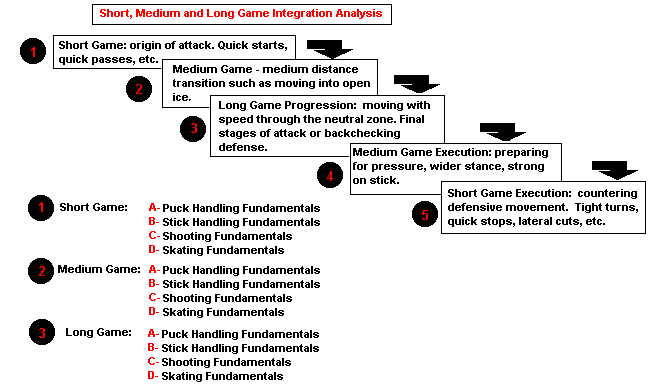

Hockey is a sport that while complex in its interpretation, is simple in its design; a sheet of ice divided by three lines with nets at either end, the objective being to put the puck in the opposition's net more times than they put it in yours. Simple or difficult? Do you think that we have gone too far in our obsession of the game in the tactical sense. I remember when I was very young, a coach describing the "tactical" side of the game.... "okay boys, first we are going to talk about offensive hockey. When our team has the puck, I want you all to work hard to get between the other team's players and their net .....okay, everybody understand? Simple right Guys! (Yeah Coach). Okay, now for defense....when the other team has the puck, we don't want them to get between us and our net....everybody understand? Simple right Guys! (Yeah Coach). Okay guys lets get on with learning the skills so we can make that happen!". I have always remembered that speech. So pure in its simple truth. From that day on I realized that skills were what allowed a player to achieve either offensive or defensive success.
Since that time I have used either "offensive posture" or "defensive posture" to describe this simple philosophy of tactical deployment. Yet while simple in theory, the execution of these "postures" becomes a surmountable task. The skating, puck/stick handling, checking, passing and shooting skills required take years to perfect. This is where I feel the journey must begin. A hockey player must understand what skills are relevant as well as how to sequentially develop them so as to become a complete player. While the game has created role players specific to speed, skill, size, strength and disposition, one cannot neglect the skills inherent to these tasks.
Enough of the introduction. Much of the following information will be controversial I suppose, a "far right" view of the game's fundamental components but, read, absorb, ponder and if you would be so kind, please provide me with some feed-back regarding your opinion.
The following information has been the result of over 20 years of research and development. Thousands upon thousands of hours have been invested in this study. It has been my obsession to comprehend each simple task inherent in the game. I called this process the Tri-TECH Hockey System.
I found in my research that all skills are inter-related. They have a co-dependency on each other which is especially obvious in the older age groups where habits have created patterns. How a player skates is related to how he carries a puck. How a player shoots is based on habits created when carrying a puck. In many cases, I have corrected skating problems by correcting or teaching new shooting techniques. What ever the case, left long enough, bad habits impact game play. As shown above, three distinct environments exist in the game of hockey:
1. Short Game - Space and distances approximating up to 15 feet
2. Medium Game - Space and distance between 15 and 60 feet
3. Long Game - Space and distances over 60 feet.
Each environment has specific skating, puck handling and shooting fundamentals critical to a player's success. The following diagrams are representations of this philosophy. While some skills and tactics are not shown, the information should create a good enough understanding of the concepts in question. The following diagram describes defensive to offensive skill integration based on short, medium and long game skills and tactics.

Ron
Johnson, President, Technical Director Quan-Tech Sport Systems Inc.
Copyright © 1996 by Ron Johnson. All rights reserved.
Revised:
04 Nov 2009 08:31:56 -0800
.